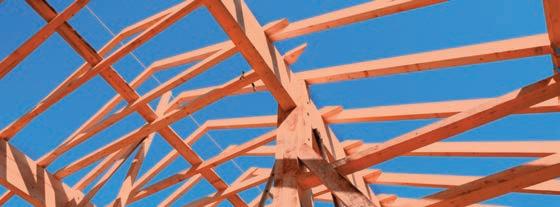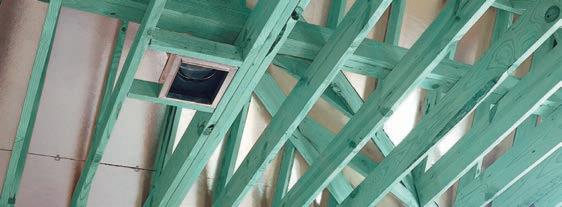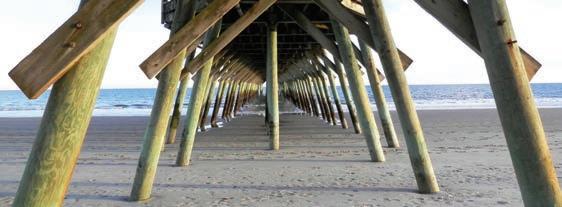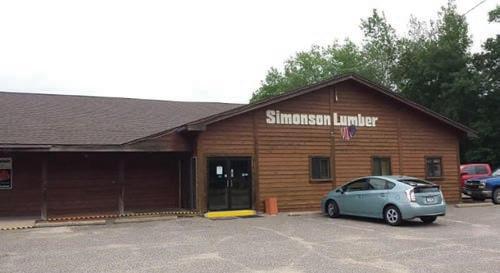
5 minute read
TREATMENT ADDITIVES
Extra! Extra! Treat all about it!
Raise margins with value-added treated wood
By David Koenig
ALL PRESSURE TREATED lumber is not equal. Beyond preservative type and retention level, wood preserving companies are increasingly adding “extras” to their treatments to make their products more durable and more attractive. In adding colorants, water repellents, stabilizers and mildewcides, commodities suddenly become something more.
Colorants—usually redwood or cedar hued—can be added during treatment or a pre-stain can be applied prior to treatment, saving the builder from having to nish it on site. They are perhaps the most widely accepted add-on to treated wood, at least within certain regions.
“Pressure treated wood with color has seen increased popularity for the past several years,” con rmed Tom Horvat, Koppers Performance Chemicals. “Pre-stained brown wood has been the norm in the western U.S. for decades. The Colorado market primarily consists of treated wood with color. The Northeast and East Coast have several treaters producing wood with pigment. Menards carries brown-pigmented wood almost exclusively in the majority of their locations.
“Colored wood is available in decking, dimensional lumber, timbers and deck specialties. Regardless of whether a deck
Products treated with the MicroPro Sienna pigment coloring system to give the wood a warm, natural brown tone that enhances its grain and natural characteristics. is built with cedar, redwood or composite decking on the surface, the treated wood understructure can now match the decking material.”
Koppers’ MicroPro Sienna is the leading pigmented treated wood in Canada, “with a 90% market share,” according to Horvat.
Viance’s colorant-treated DesignWood is primarily sold in Canada as well, but is also popular in the West and Midwest U.S. Some Viance treaters rebrand it as Barefoot Brown, Red Sedona, and Woodland Brown.
Lonza markets wood treated with its Tanatone color technology under its Wolmanized Outdoor Wood brand. Similarly, Wolmanized wood is also available with Lumbrella Plus water repellent or BARamine, which provides improved penetration, stabilization and moldicide protection.
“Each dealer is di erent in what they stock based on their sales and the space they have in their lumber aisle,” said Lonza’s Belinda Remley. “Often, the add-ons available are dependent on what their treater partner o ers.”
Treated wood with water repellent is generally available without having to special order.
O ering “better lumber” can become the calling card of an independent dealer. “I stock only #1 grade KDAT in my 2x lumber,” said Jim Pearce, owner of Pearce Lumber Co., Ruston, La. “I also stock premium deck boards & C&B 1x boards with the water repellent. My customers expect a better product than the box stores.”
The key to selling such upgraded options is to ensure end-users are aware of their bene ts—and simply that they are available.
“Most homeowners think treated wood is all the same,” said Viance’s Edie Kello. “And in a lumberyard, material is stored outside under sheds without point-of-sale materials, so even contractors may not know the added bene ts some chemicals in preservatives o ered. There are di erences.”
At Lowe’s, Viance has bundle placards and literature that clearly spell out the advantages of Severe Weather with Ecolife, “the only treatment with an integrated water repellent standardized by the AWPA.”
Through its treater partner marketing programs, Lonza also provides in-store promotional material to assist sales associates, professionals and DIYers in understanding value-
added treated wood products.
Koppers’ Horvat added, “Some retailers are promoting color and water repellent advantages on their websites and the pro buyers are generally aware of di erences and advantages of each. Selling a project without the need to apply a water repellent or stain for the rst few years is a key selling point for the consumer.”
The challenge—or opportunity—remains. Few of the dealers contacted by The Merchant had the value-added treated products in stock. Several dealers were convinced their customer base would not bear the increased cost.
William Crosby, manager of County Building Center, Madill, Ok., said customers rarely ask for anything extra. “The current climate for yellow pine treated lumber has been more focused on product availability and said product in the prioritized #1 rating lumber,” Crosby explained. “However, if a request for a product comes in a special order, I am up front with cost and whether such cost is warranted for the project.”
The recent run on treated wood has left many dealers with diminished access to treated wood of any kind. “The past nine months has been a challenge getting any pressure treated at all,” said Jim Bruneau, manager of Middleton Building Supply, Dover, N.H. “I am not sure if our treaters in the Northeast are even o ering any. I can’t imagine what the premium price would be considering PT lumber doubled in price over the summer.”
Dave Devries, president of Builders Buying Group, Grand Rapids, Mi., agreed: “At this point, our customer base is happy just to get product given the supply chain constraints. That said, while we are not promoting upgrades, I suspect we will once the market conditions and lead times improve.”


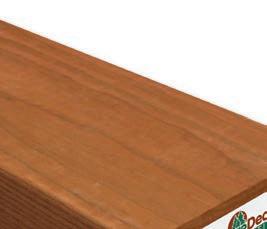


Located in Sumner, Washington, Western Wood Preserving Co. has been a manufacturer of pressure treated wood products, supplying residential, commercial and industrial markets of the Paci c Northwest since 1971. In addition, our strategic location near the ports of Tacoma and Seattle, provide easy access to the Alaskan, Hawaiian and Paci c Rim markets. Our facility includes 12 acres of treatment, drying and storage areas, and produces top quality treated wood products for residential and commercial consumers in the wholesale market.

